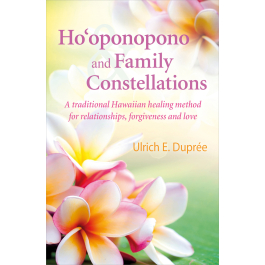Imagine finding a unique and transformative path towards healing and self-discovery – one that is utterly distinct from traditional therapy. This is where the fascinating journey of Ho’oponopono begins. Unlike conventional therapeutic approaches, Ho’oponopono delves deep into the roots of our problems, focusing on personal responsibility and forgiveness. Through its ancient Hawaiian practices, Ho’oponopono offers a refreshing perspective that empowers you to become the creator of your own reality, paving the way for inner peace and profound healing. Embark on an exploration of this extraordinary healing method and learn how it can revolutionize your life.
Definition of Ho’oponopono
Origin and meaning of Ho’oponopono
Ho’oponopono is a traditional Hawaiian healing practice that focuses on reconciliation, forgiveness, and inner harmony. The word Ho’oponopono translates to “to make right” or “to correct” in English. It is deeply rooted in the spiritual and cultural beliefs of the Hawaiian people and has been passed down through generations as a way to resolve conflict and restore balance within oneself and in relationships with others. Ho’oponopono is based on the principle that everything we experience in life is a reflection of our inner state and that by taking personal responsibility for our thoughts, actions, and emotions, we can heal and transform our lives.
Traditional therapy techniques
Traditional therapy, on the other hand, is a psychological and scientific approach to healing and personal growth. It encompasses various therapeutic techniques and models that are designed to analyze, understand, and treat mental and emotional issues. Traditional therapy draws upon theories, such as psychoanalysis, cognitive-behavioral therapy, and humanistic approaches, to address specific psychological disorders and help individuals gain self-awareness and understanding. These techniques often involve diagnostic assessments, treatment plans, and structured sessions guided by professional therapists or psychologists.
Approach and Focus
Ho’oponopono: Spiritual and holistic approach
The approach of Ho’oponopono is deeply rooted in spirituality and takes a holistic view of healing. It recognizes the inseparable connection between the mind, body, and spirit and acknowledges the existence of a divine essence within each individual. The focus of Ho’oponopono is on achieving inner peace and harmony by aligning oneself with the divine and letting go of negative emotions, beliefs, and memories. Through the practice of Ho’oponopono, individuals are encouraged to take personal responsibility for their experiences and actively seek forgiveness, gratitude, and love as pathways to healing and transformation.
Traditional therapy: Psychological and scientific approach
In contrast, traditional therapy adopts a psychological and scientific approach to understanding and addressing mental and emotional issues. It emphasizes the importance of self-awareness, introspection, and understanding the underlying causes of distress. Traditional therapy focuses on helping individuals gain insight into their thoughts, behaviors, and emotions, and provides them with tools and techniques to develop coping mechanisms, modify their behavior, and improve their overall well-being. The approach is grounded in evidence-based practices and is guided by the principles of psychology and psychiatric research.

Beliefs and Philosophy
Ho’oponopono: Connection with divinity and personal responsibility
A fundamental belief in Ho’oponopono is the acknowledgment of a divine presence within each individual and the understanding that we are responsible for our own experiences. According to this belief system, everything we encounter in life, including our relationships and circumstances, is a reflection of our own internal state. Therefore, through the practice of Ho’oponopono, individuals are encouraged to take full responsibility for their thoughts, actions, and emotions in order to heal and create positive experiences. By aligning oneself with the divine essence within and seeking forgiveness, love, and gratitude, individuals can release past traumas and negative beliefs, thus restoring harmony and balance in their lives.
Traditional therapy: Emphasis on self-awareness and understanding
Traditional therapy, on the other hand, places a strong emphasis on self-awareness and understanding as stepping stones towards healing and personal growth. It recognizes the complex interplay between past experiences, beliefs, and patterns of behavior that contribute to mental and emotional distress. Through therapy, individuals are guided to explore their thoughts, feelings, and behaviors in a safe and supportive environment. The goal is to gain insight into their subconscious patterns and underlying causes of distress, allowing for greater self-understanding and the ability to make positive changes in their lives.
Process and Techniques
Ho’oponopono: Four key phrases and clearing techniques
Ho’oponopono involves the practice of four key phrases: “I’m sorry, please forgive me, thank you, I love you.” These phrases are repeated silently or spoken aloud as a means of acknowledging and releasing any negative emotions, memories, or beliefs that may contribute to suffering. Additionally, Ho’oponopono practitioners may use visualization, meditation, and breathwork techniques to facilitate emotional and energetic clearing. The process of Ho’oponopono is highly individualized and can be incorporated into daily life as a form of ongoing self-reflection, healing, and transformation.
Traditional therapy: Diagnostic analysis and treatment methods
Traditional therapy employs various diagnostic analysis tools and treatment methods specific to different therapeutic modalities. These may include cognitive-behavioral therapy (CBT), dialectical behavior therapy (DBT), psychodynamic therapy, or mindfulness-based approaches, among others. Therapists work collaboratively with individuals to identify and understand specific psychological disorders or challenges and develop targeted treatment plans. These treatment plans may consist of regular therapy sessions, homework assignments, therapeutic techniques, and interventions tailored to the individual’s unique needs and goals.
Targeted Issues
Ho’oponopono: Clearing past traumas and releasing negative emotions
Within the framework of Ho’oponopono, the focus is on clearing past traumas and releasing negative emotions that may hinder personal growth and well-being. The practice aims to heal relationships, whether with oneself or others, by addressing and resolving underlying emotional wounds. Ho’oponopono encourages individuals to let go of the past, forgive themselves and others, and cultivate a greater sense of compassion and love.
Traditional therapy: Addressing specific psychological disorders
Traditional therapy is designed to address a wide range of specific psychological disorders, such as depression, anxiety, trauma-related disorders, substance abuse, and personality disorders. Therapists work with individuals to identify and understand the symptoms and underlying causes of these disorders. Treatment plans are then tailored to each individual’s unique needs, utilizing evidence-based therapeutic interventions to help alleviate symptoms and improve overall functioning.
Healing Principles
Ho’oponopono: Transcendence and forgiveness
The healing principles of Ho’oponopono revolve around transcendence and forgiveness. By acknowledging one’s connection with the divine and taking personal responsibility for their experiences, individuals can let go of past grievances, heal emotional wounds, and cultivate a state of inner peace. The practice emphasizes forgiveness, recognizing that holding onto past hurts only perpetuates suffering. Through Ho’oponopono, individuals can transcend the limitations of the ego and connect with a deeper, more expansive sense of self and consciousness.
Traditional therapy: Coping mechanisms and behavior modification
In traditional therapy, the healing process involves developing coping mechanisms and modifying behaviors to improve overall well-being. Therapists assist individuals in identifying unhelpful patterns of thinking and behaving that contribute to distress and offer strategies to develop healthier alternatives. Through therapy, individuals gain greater self-awareness, learn to manage their emotions more effectively, and acquire skills to navigate life’s challenges with resilience and adaptive coping strategies.

Time and Commitment
Ho’oponopono: Continuous practice and lifelong commitment
Ho’oponopono is a practice that requires continuous effort and commitment. It is not a one-time event but rather a way of life. The principles and techniques of Ho’oponopono can be incorporated into daily routines, such as meditation or self-reflection practices, to continually release negative emotions and thoughts. Since the goal of Ho’oponopono is to cultivate a state of inner peace and harmony, individuals are encouraged to make it an ongoing part of their lives, paving the way for ongoing healing and personal growth.
Traditional therapy: Structured sessions and time-limited treatment
Traditional therapy typically follows a structured session format and is often time-limited. Therapeutic sessions are scheduled at regular intervals, and the duration of treatment varies depending on the individual’s needs and goals. Traditional therapy focuses on the immediate concerns and symptoms identified during the assessment process, with the intention of achieving specific therapeutic goals within a predefined timeframe. However, the benefits gained from therapy can extend beyond the time-limited treatment, as individuals acquire skills and insights that can be applied throughout their lives.
Practitioner or Individual Focus
Ho’oponopono: Personal responsibility for healing
In Ho’oponopono, the focus is on the individual taking personal responsibility for their own healing and transformation. The practice emphasizes that each person has the power to heal themselves by releasing negative emotions, forgiveness, and cultivating a state of love and inner peace. While there may be practitioners or guides who offer support and guidance, the ultimate responsibility for healing lies with the individual practicing Ho’oponopono.
Traditional therapy: Expert guidance and professional intervention
Traditional therapy places an emphasis on expert guidance and professional intervention. Therapists or psychologists with specialized training and knowledge provide support, expertise, and guidance throughout the therapeutic process. They draw upon their expertise in psychological theories and therapeutic techniques to help individuals gain self-awareness, identify areas for growth, and develop strategies for healing. Traditional therapy recognizes the benefits of professional intervention and the value of having an objective perspective to guide individuals through their healing journey.

Cultural and Spiritual Influences
Ho’oponopono: Hawaiian cultural roots and spiritual connection
Ho’oponopono originated from the cultural and spiritual beliefs of the Hawaiian people. It is deeply embedded in their traditions and practices, reflecting their reverence for the land, ancestors, and divine presence. The cultural influences of Ho’oponopono shape its holistic approach to healing and emphasize the interconnectedness of all beings. Alongside its spiritual roots, Ho’oponopono carries the wisdom and insights that have been passed down through generations, providing a unique perspective on healing and personal growth.
Traditional therapy: Multicultural and secular influences
Traditional therapy encompasses a wide range of therapeutic modalities and approaches, drawing from various cultural and secular influences. The field of psychology has evolved to integrate knowledge and practices from different cultures and belief systems, recognizing the importance of cultural sensitivity and individual diversity. Traditional therapy aims to provide a safe and inclusive space for individuals from various cultural backgrounds, tailoring interventions to align with their unique beliefs and values.
Integration with Other Modalities
Ho’oponopono: Synergies with energy healing and mindfulness practices
Ho’oponopono can be complemented by other modalities that promote healing and self-awareness. Many practitioners of Ho’oponopono also incorporate energy healing techniques, such as Reiki or acupuncture, to support the release of energetic blockages and facilitate deeper healing. Additionally, mindfulness practices, such as meditation or yoga, can enhance the effectiveness of Ho’oponopono by fostering a greater sense of presence and awareness.
Traditional therapy: Integration with pharmacotherapy and complementary approaches
Traditional therapy can be integrated with pharmacotherapy and other complementary approaches to holistically address mental health issues. In cases where medication is necessary, therapists may work collaboratively with psychiatrists or medical professionals to develop comprehensive treatment plans. Additionally, complementary approaches such as art therapy, music therapy, or body-based therapies can be integrated into traditional therapy to provide additional avenues for healing and self-expression.
In conclusion, Ho’oponopono and traditional therapy offer unique approaches to healing and personal growth. While Ho’oponopono is deeply rooted in Hawaiian culture and spirituality, traditional therapy draws upon psychological theories and scientific research. Both modalities can be effective in addressing various issues, and the choice between them may depend on individual preferences, beliefs, and therapeutic goals. Ultimately, the goal of both Ho’oponopono and traditional therapy is to promote personal well-being and facilitate the journey towards healing and self-discovery.

